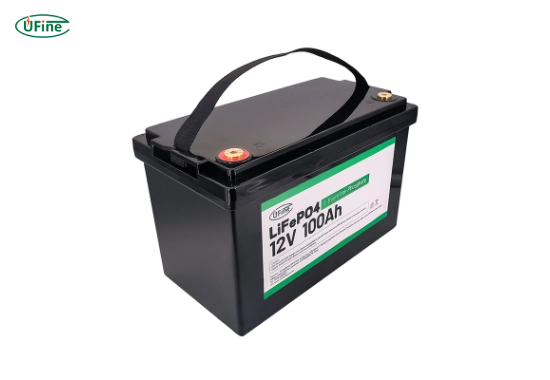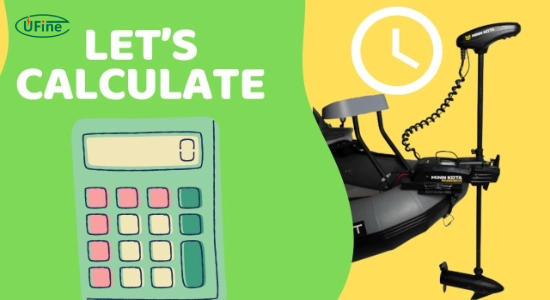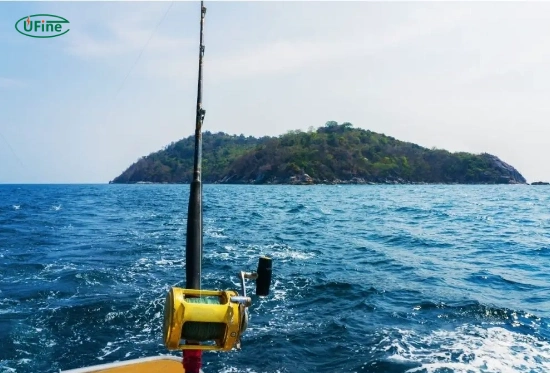When you’re out on the water, one of the most common concerns is how long a 100Ah battery will run a trolling motor. This question is crucial for anyone looking to maximize their fishing or boating experience. Understanding the runtime of your battery can help you plan your trips effectively and ensure you have enough power for a successful outing. In this article, we’ll delve into various factors that affect battery life, perform detailed calculations, and explore how different types of batteries can impact your trolling motor’s performance.
Part 1. What is a 100Ah battery?
A 100Ah (amp-hour) battery is a specific type of deep-cycle battery designed for applications requiring sustained power over extended periods. The “100Ah” rating signifies that the battery can deliver 100 amps for one hour or 10 amps for ten hours before it completely discharges. These batteries are prevalent in marine applications, including trolling motors, due to their ability to withstand repeated discharges and recharge without significant wear.
Key Characteristics of a 100Ah Battery
- Deep Cycle Capability: Engineers design deep-cycle batteries to provide steady power over long periods, making them suitable for applications like trolling motors.
- Durability: They can endure numerous charge and discharge cycles, essential for prolonged use in marine environments.
- Versatility: Beyond trolling motors, you can also use these batteries in RVs, solar energy systems, and other applications that require reliable power.
Part 2. How does a trolling motor work?
A trolling motor is an electric propulsion system mounted on a boat, allowing for low-speed movement. Its main components include:
- Motor: This component converts electrical energy into mechanical energy to propel the boat.
- Propeller: Attached to the motor, it generates thrust to move the vessel through water.
- Control System: This allows the operator to steer and adjust the speed of the motor.
Trolling motors are typically powered by batteries, making them an efficient choice for anglers who need quiet operation while fishing or navigating.
Part 3. Factors affecting trolling motor battery life
Several factors influence how long a 100Ah battery will run your trolling motor:
- Motor Power Rating: Trolling motors have various power ratings (measured in pounds of thrust). Higher thrust ratings require more power and will drain the battery more quickly.
- Speed Settings: Running your motor at higher speeds consumes more energy than operating at lower speeds.
- Battery Condition: A well-maintained battery will perform significantly better than an old or poorly maintained one.
- Water Conditions: Rough waters may require more power to maintain speed than calm waters.
Part 4. How to calculate runtime for a trolling motor?
To estimate how long a 100Ah battery can run your trolling motor, you can use this formula:
- Runtime (hours) = Battery Capacity (Ah) / Motor Draw (A)
Example Calculation
Suppose you have a trolling motor that draws 30 amps at maximum speed. The calculation would be:
- Runtime = 100 Ah / 30 A ≈ 3.33 hours
Under these conditions, your battery would last approximately 3 hours and 20 minutes before recharging.
Common Scenarios
To better understand how varying power draws affect your battery’s runtime, let’s look at a few common scenarios:
Scenario 1: Low-Speed Operation
If you operate your trolling motor at a low speed that draws only 10 amps, the runtime would be:
- Runtime = 100 Ah / 10 A = 10 hours
This scenario is ideal for fishing or leisurely cruising, allowing for extended time on the water.
Scenario 2: High-Speed Operation
Conversely, if you run your motor at high speed, drawing 50 amps, the runtime would be:
- Runtime = 100 Ah / 50 A = 2 hours
While this option provides faster movement, it significantly reduces your time on the water, making it better suited for short-distance travel.
Part 6. How does the type of battery impact the performance of a trolling motor?
The type of battery you choose can significantly affect your trolling motor’s performance. Here are some key considerations:
- Lead-Acid vs. Lithium-Ion: Lead-acid batteries are heavier and have lower energy density than lithium-ion batteries. While lead-acid batteries are generally less expensive upfront, lithium-ion batteries offer longer lifespans and faster charging times.
- Discharge Rates: Different types of batteries have varying discharge rates. Lithium-ion batteries can often sustain higher discharge rates without damaging their lifespan, making them ideal for high-performance applications.
- Weight Considerations: The weight of the battery can also impact your boat’s overall performance. A lighter lithium-ion battery allows for better maneuverability and less strain on your trolling motor.
Choosing the correct type of battery affects how long you can run your trolling motor and its efficiency and responsiveness to the water.
Part 7. Battery discharge considerations
It’s crucial to only partially discharge a deep-cycle battery regularly as it can shorten its lifespan. Most experts recommend keeping the discharge level above 50% for optimal performance and longevity.
Safe Discharge Levels
- Discharging to 50%: Provides about 50Ah usable capacity.
- Discharging to 80%: Limits usable capacity to about 20Ah, which can significantly affect runtime.
Part 8. Tips for Maximizing Trolling Motor Battery Life
To ensure you get the most out of your 100Ah battery while using it with a trolling motor, consider these tips:
- Regular Maintenance: Keep terminals clean and ensure connections are tight to prevent power loss.
- Charge After Use: Always recharge your battery after each outing to maintain its health and readiness for future trips.
- Monitor Usage: Keep track of how many amps your motor draws at different speeds so you can plan accordingly during outings.
Part 9. FAQs
-
How do I know how many amps my trolling motor uses?
This information is usually found in the user manual or specifications provided by the manufacturer. Alternatively, an ammeter can give you real-time data on amp usage while operating. -
Can I use a regular car battery for my trolling motor?
While you can technically use them, experts do not recommend it. Car batteries provide short bursts of high power rather than sustained use like deep-cycle batteries. -
What happens if I over-discharge my battery?
Over-discharging can lead to sulfation, which damages the battery plates and reduces overall capacity and lifespan. -
How often should I replace my trolling motor battery?
Depending on usage and maintenance practices, deep-cycle batteries typically last three to five years. -
Can I use multiple batteries with my trolling motor?
Yes! Connecting multiple batteries in parallel increases capacity and runtime but requires careful management of charging and discharging cycles.
Related Tags:
More Articles

How to Choose the Best Floor Scrubber Battery for Commercial Cleaning?
Selecting the ideal floor scrubber battery ensures a long runtime, rapid charging, and minimal maintenance for efficient commercial cleaning operations.
Battery for Blower vs Battery for Leaf Vacuum: Which One Should You Choose?
Battery for blower vs leaf vacuum—learn the key differences in power, fit, and runtime to choose the right battery for your outdoor tool needs.
How to Choose the Right Battery for Blower?
Choosing the right blower battery? Consider voltage, capacity, chemistry & usage. This guide helps match the best battery for peak performance.
How to Choose the Best Insulated Battery Box for Lithium Batteries?
Choosing the Best Insulated Battery Box for Lithium Batteries? Discover key factors such as size, material, and safety for optimal protection and performance.
7 Critical Elements on a Lithium Battery Shipping Label
What must be on a lithium battery shipping label? Learn 7 key elements to ensure safety, legal compliance, and correct handling across all transport modes.






